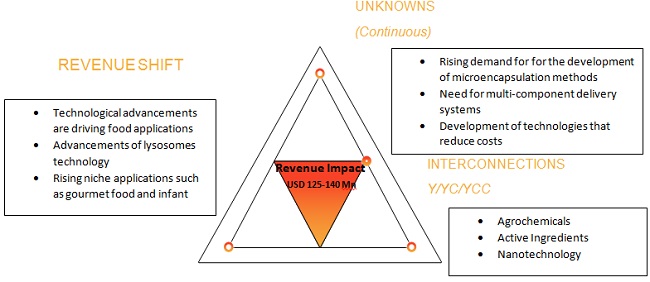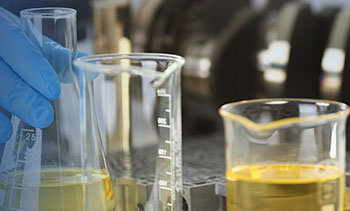Client’s Goals
A Europe-based microencapsulation service provider engaged to increase its revenues in North American market. For this purpose, we offered a detailed view of our client’s clients’ and their clients’ revenue mix. A series of problems were defined and solved by us for the client. One of the key questions answered during the engagement was-
- Insights on market demand for microencapsulation in different application areas.
Our Approach
We provided a holistic view of the North American market with regard to prospects for microencapsulation in the region. Our analysts identified application areas with the highest growth opportunities, such as fortified foods & beverages, sports nutrition, pharmaceuticals, and agrochemicals through KnowledgeStore, AI-driven market intelligence platform.
Our team also interviewed potential customers in end-use industries to understand their requirements for microencapsulation and supply chain experts and other intermediaries to provide insights to help create an effective supply-chain strategy. Different aspects, including pricing and existing microencapsulation technologies offered by existing players, were also mapped by our team. Further, client services team recommended strategy that helped the client generate revenue impact.
Revenue Shifts Identified
The introduction of new technologies in encapsulation, such as nanoencapsulation and bio-encapsulation, is driving the demand for encapsulation in several food applications. Encapsulation helps in enhancing the taste of many food products. For instance, initially, the taste of products containing omega-3 fatty acids was of very bad odour. With the use of encapsulation technology, the fragrance and taste of omega-3 fatty acids have enhanced. The recent advancements of lysosomes technology are being used in the manufacturing of several products such as probiotics, nutraceuticals, and nutrigenomics, offering numerous health benefits. Technological advancements have increased the adoption of encapsulation in niche applications such as gourmet food and infant.
Interconnections
The demand for microencapsulation is projected to rise in agrochemicals sector to benefits over conventional technologies. The benefits achieved in agrochemicals due to microencapsulation are controlled release to enhance the efficiency of agrochemicals, meeting environmental standards achieved by controlled release, and reduced application cost. The agricultural loss due to pest attacks is overcome by the microencapsulation method by using controlled release.
Unknowns Identified
Demand is projected to rise for the development of microencapsulation methods, with the ability to consecutively release multiple active ingredients fora long-lasting effect of the active ingredient, such as, in the case of microencapsulation of food ingredients, long-lasting mouthfeel or organoleptic characteristics. There is a need for multi-component delivery systems that consecutively deliver multiple ingredients, especially those that do not mix well, such as fat- and water-soluble ingredients, various ingredients for multiple functions, and non-compatible ingredients. Industry players have already developed nanotechnology-based systems that increase ingredient stability, bioavailability, control release, and residence time in the oral cavity. Apart from this, the development of technologies that reduce costs and can be used as biocatalysts can be explored.
Revenue Impact (RI)
Our insights enabled the client to gain a better understanding of the regional market scenario including innovations in microencapsulation technologies, new application areas, development in raw materials, and effective competitor strategies followed in the market. We further helped the client to strategize and create a more targeted product offering. The client was able to target new revenue streams with projections of USD 125–140 million in five years. Also, with our recommendations, the client was able to identify profitable application areas with a high degree of customer acceptance for the product in the region.





